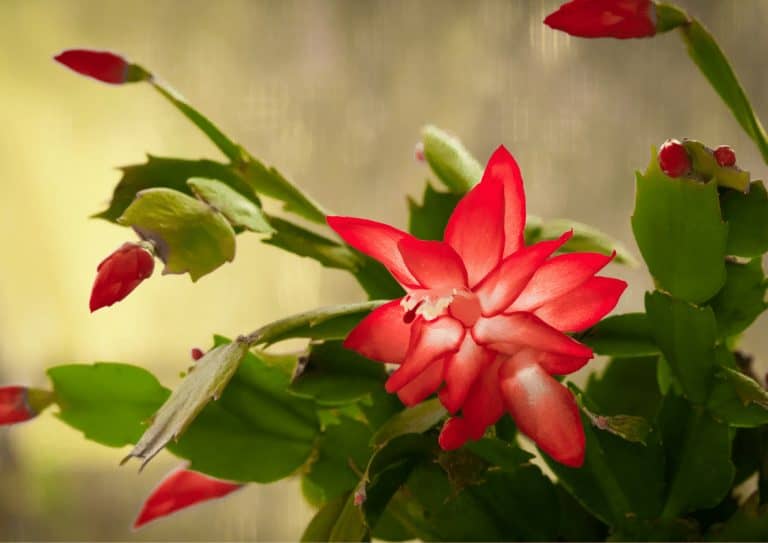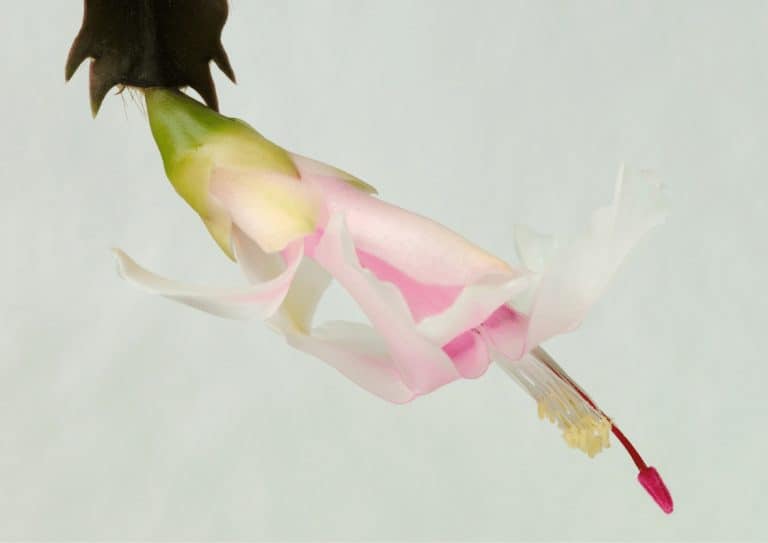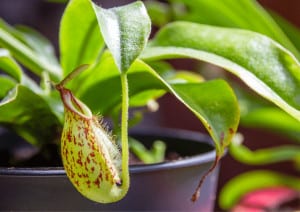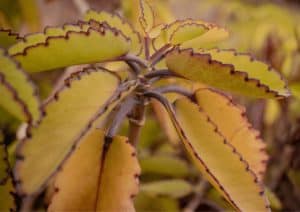Do Christmas Cactus Flowers Change Colors?
- Lakeisha Ethans
- July 14, 2022
If you buy something using the retail links in our articles, sometimes we earn a small affiliate commission. This does not impact the products we recommend.
If you’ve purchased a Christmas cactus, you’ve perhaps done so for the specific color of its flowers.
As such, you’d likely be taken aback when, a couple of years down the line, your Christmas cactus’ newly formed blooms are a completely different hue!
When plant foliage changes colors, it’s usually a sign that something is wrong. But when only the flowers of a plant have altered colors, what does that mean? Is it a sign that something’s gone awry and you need to rush to save your plant, or is it ultimately harmless and solely cosmetic?
Christmas cactus flowers can change colors naturally and do so when affected by various external stimuli such as temperature or availability of certain nutrients. Color change can also happen within hybrid species when a rare cultivated color reverts back to the shade expressed by a dominant gene.
If you prefer the color of your Christmas cactus blooms as they are, you might want to try to prevent the flowers from changing hue. Or, if you’re curious and wish to experiment, you may want to take steps to accelerate a color change.
Either way you’ll need to understand why color changes in Christmas cactus flowers happen and what factors that make them do so are within your control. In this post, we’ll provide a thorough overview of color – changing flowers on a Christmas cactus by answering the following questions:
- What are the possible colors of Christmas cactus flowers?
- Does temperature affect the color of Christmas cactus flowers?
- Can genetics influence Christmas cactus flowers to change colors?
- Does nutrition affect the colors of Christmas cactus flowers?

What are the possible colors of Christmas Cactus flowers?
Christmas cactus flowers come in many colors. Mutations during early cultivation of this plant have created hues such as white, yellow, orange, “gold”, pink, red, and purple in the present-day flowers of this genus. Some species of Christmas cactus may be able to grow all of these colors, while others might only grow one or two.
Christmas cacti in their natural environment have evolved to grow colors of flowers based upon their ability to attract pollinators. For example, those that rely on hummingbird pollination often have redder flowers.
Does temperature affect the color of Christmas Cactus flowers?
The most common cause for a change in the color of Christmas cactus flowers is environmental temperature. Christmas cacti don’t like cold temperatures, but to bloom and form buds, they usually need a period of low light and lower temperatures for about six weeks before it blooms. During this period, buds are slowly formed and set, including their color expressed later in life. Temperatures below 57 °F (14 °C) whilst the plant forms flower buds tend to promote pinkish tints and colors in a Christmas cactus flower. This means that light-colored flowers, like yellow and white ones, may turn entirely pink or become pinkish when exposed to these low temperatures. Meanwhile, flowers that were already red or pink may have their color deepened. Given that most Christmas cacti actually prefer temperatures below 65 °F (18°C) in the six weeks leading up to their blooming, it can be difficult to maintain the exact, perfect temperature that facilitates flowering without affecting the plant’s color.
Can genetics cause Christmas Cactus flowers to change colors?
Christmas cacti are technically a genus made up of multiple species that are crossbred by sellers and cultivators. This means a large proportion of the genus are hybrids.
While there is thought to be only four Christmas cacti hybrids that have been officially named, unnamed hybrids are not uncommon. Hybrids are bred artificially via human manipulation with the goal of developing a specific trait which for ornamental plants might be increasing the number of flower buds, or in the case of Christmas cacti developing a specific color of flower.
All hybrid plants run the risk of reverting to the color of their dominant genes as time passes and mutations occur. This mutation is harmless and doesn’t require any action on your part. In most cases, reputedly bred hybrids are more stable and are at less risk of reverting to a natural red tone.
Once a Christmas cactus reverts to its dominant color, like houseplants that were once variegated, the chances of its flowers returning to its recessive, cultivated hue are slim. You’ll do well simply to embrace the newfound color. On the bright side, this means that nothing is wrong health-wise or environmentally with your plant’s growth.
To avoid possible color changes from genetics, try to get information on the Christmas cacti you purchase from their cultivators. You can opt to simply avoid cross-colored hybrids at all, as there’s no way to 100% guarantee a certain outcome years down the line when two different colors of two different species are bred together.
Does nutrition affect the colors of Christmas Cactus flowers?
For the most part, nutrition shouldn’t dramatically affect the appearance of your Christmas cactus flowers, but there is one specific factor that is theorized to affect flower color. And that factor is iron.
Iron may only be a micronutrient, but even those small amounts are crucial for plant growth. It is iron that allows plants to be able to produce much-needed chlorophyll, which in turn allows them to consume sunlight and light in general for food and nutrition. Chlorophyll is also what gives plants their green leaves and stem.
Since a lack of iron can often be indicated by a change in foliage colors, it’s not entirely out of the question that this mineral can affect the flowers of the Christmas cactus too. A lack of available iron may subtly lighten flower colors or remove the richness of certain blooms, turning orange or pink to white. This can even happen when the plant foliage shows no signs of iron deficiency.
If you suspect that a lack of iron is affecting the flower color of your Christmas cactus, you should ensure that your potting mix is suitable for the plant. For a Christmas cactus that means a mix that is free-draining and well aerated, with iron delivered from an organic source.
You also may want to consider the use of a mild, diluted seaweed fertilizer or a simple iron supplement. However, do note that the plant should not receive an excessive amount of iron, as that will harm it more than help it.

Take home message
Christmas cacti come in many different hues and are notoriously difficult to classify by color. Their blooms can change due to environmental factors such as temperature or iron availability, and these color swaps can often be quite unpredictable. The genes of hybrid cacti can also cause sudden mutations in flowers as the plant reverts to its dominant genes as time progresses.
You can avoid Christmas cactus flower changes by ensuring sufficiently warm temperatures and providing enough iron in your plant’s soil. But to be completely sure that your plant’s flowers will not permanently mutate in color, you’ll have to talk to its cultivator to determine if the plant is a hybrid and if its dominant parent has a different flower color.

Lakeisha Ethans
Houseplant Writer
Mother to two humans and hundreds of plant babies. Lakeisha uses her 15 years of experience as a content writer to specialise in simplifying what you need to know to grow and care for all indoor plants.
Similar Posts
How Long Does It Take Nepenthes To Grow Pitchers?
Nepenthes plants or pitcher plants are renowned for their carnivorous pitchers. When can you expect these pitchers to finally grow?
Why Are My Kalanchoe Leaves Turning Yellow & How Can I Fix It?
It's never a good sign when a plant's leaves start to yellow. For hardy plants like the Kalanchoe, what could yellowing leaves mean?



